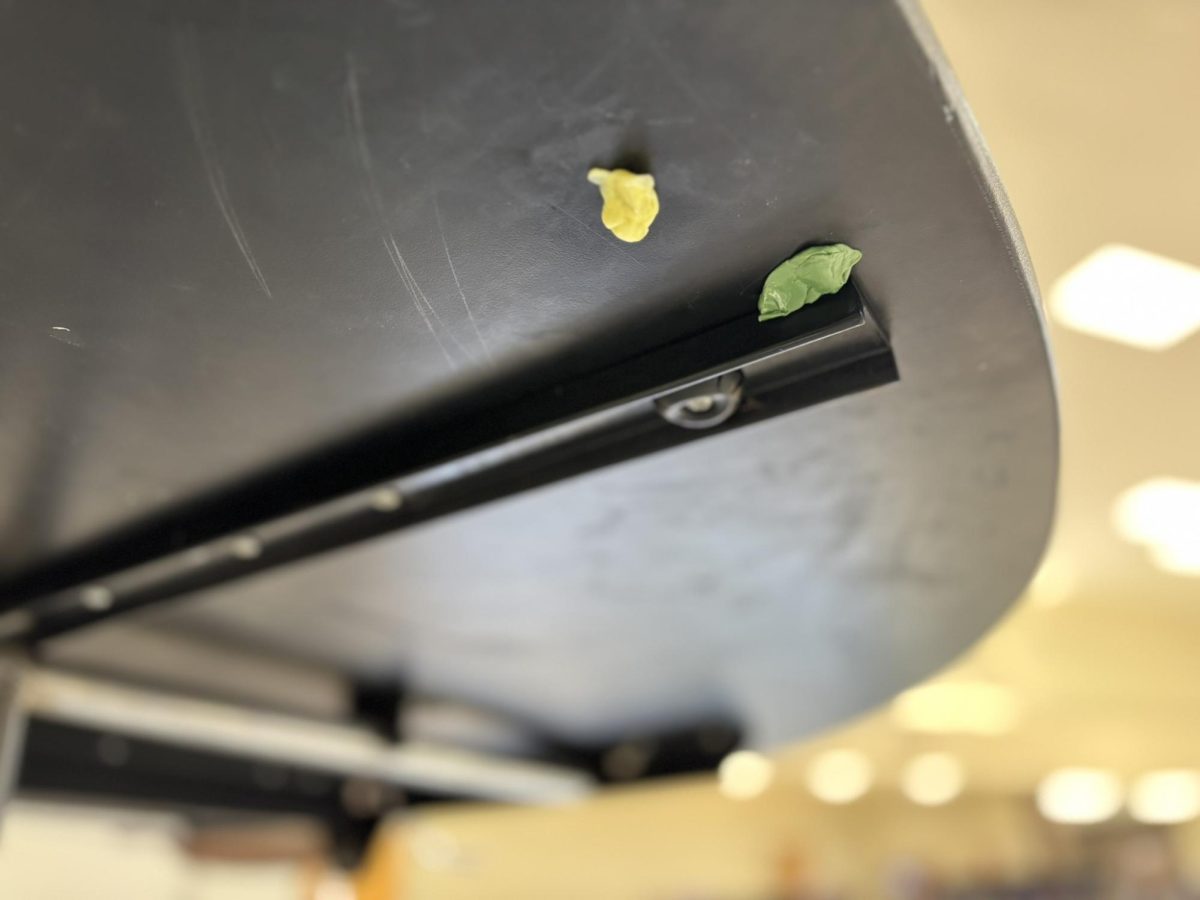There is no feeling quite like accidentally touching a sticky, squishy substance underneath your desk. At first you pick at it in confusion. What is that? You think to yourself as you continue to poke it, trying to understand what the foreign thing is.
After some frustration, you pull your hand out from underneath your desk and discover a pink, gooey residue stuck in your fingernails. Yuck! It’s gum!
Chewing gum is a popular pastime at South. From Extra to Trident, students chew gum not just for fresher breath or cleaner teeth, but to suppress boredom and increase alertness during class.
Unfortunately, discarded chewing gum on undersides of desks, chairs, and even walls has left quite a few students in a sticky situation. 62 percent of South students reported accidentally touching chewed gum while in school.
Interestingly, 92 percent of gum-chewing students report throwing out their gum or putting it back in the wrapper. If most students only chew one to two pieces a day, and almost all students report throwing out their gum, how does so much of it end up where it shouldn’t?
Our hypothesis is that chewed gum is left in improper places because students feel uncomfortable standing up in the middle of class to throw out their gum.
But one look at South’s handbook will reassure students that they’re not breaking any rules by tossing their IceBreakers in the trash during World History, since gum isn’t banned at our school!
While some teachers may prohibit gum in their classes, it’s for the welfare of their own students. For instance, chewing gum during a science lab isn’t allowed because it increases the possibility of students ingesting chemicals.
On the other hand, chewed gum left on school furniture can become a hotspot for bacteria. According to a study conducted by the Public Health and Safety Organization on the presence of bacteria in schools, there are “as many as 2.7 million bacterial cells per square inch on common school surfaces.” They also found that “a student’s hand had 1,500 bacterial cells per square inch.” Factor in someone else’s saliva from discarded gum under a desk, and an unsuspecting student might have a biohazard on their hands.
Intrigued by our data and our hunch, we launched into a search for ill-placed gum around South.
In our own classroom of 21 journalists, we discovered six globs of gum underneath our desks, along with two gum stains on the carpet.
Fascinated by our findings, we took our investigation outside the classroom. After conducting a thorough search of Commons 1, we discovered 34 pieces of chewed gum stuck under tables and chairs.
Our results left us with more questions than answers: Why are students reluctant to throw out gum in social settings like the lunchroom? How long does gum stay under a desk? Should South ban gum in the future?
One thing we do know for sure is that keeping our school clean and healthy is a student-wide collaboration. As we start the new year, let’s all approach 2025 with fresh breath, clean fingers, and gum-free furniture.







